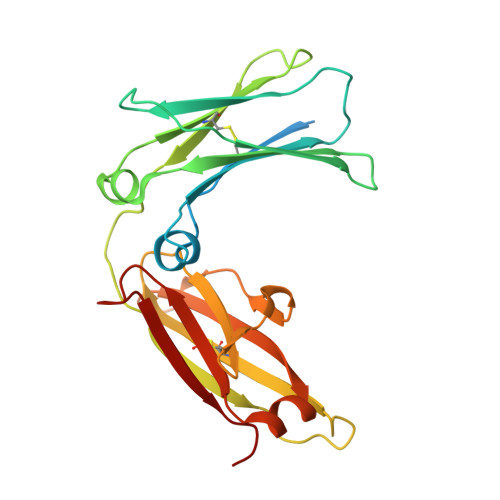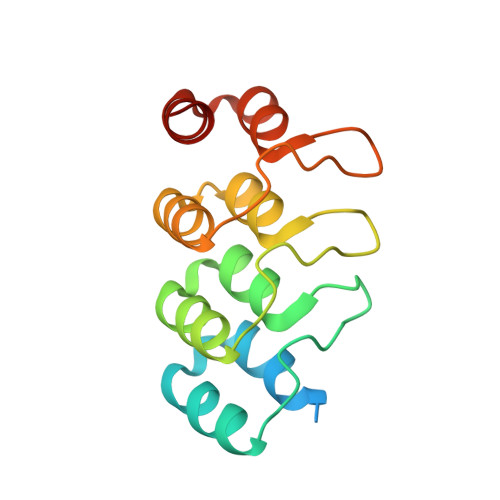Structure-guided design of ultrapotent disruptive IgE inhibitors to rapidly terminate acute allergic reactions.
Pennington, L.F., Gasser, P., Brigger, D., Guntern, P., Eggel, A., Jardetzky, T.S.(2021) J Allergy Clin Immunol 148: 1049-1060
- PubMed: 33991582
- DOI: https://doi.org/10.1016/j.jaci.2021.03.050
- Primary Citation of Related Structures:
7MXI - PubMed Abstract:
Anaphylaxis represents one of the most severe and fatal forms of allergic reactions. Like most other allergies, it is caused by activation of basophils and mast cells by allergen-mediated cross-linking of IgE bound to its high-affinity receptor, FcεRI, on the cell surface. The systemic release of soluble mediators induces an inflammatory cascade, rapidly causing symptoms with peak severity in minutes to hours after allergen exposure. Primary treatment for anaphylaxis consists of immediate intramuscular administration of adrenaline. While adrenaline alleviates life-threatening symptoms of an anaphylactic reaction, there are currently no disease-modifying interventions available. We sought to develop potent and fast-acting IgE inhibitors with the potential to rapidly terminate acute allergic reactions. Using affinity maturation by yeast display and structure-guided molecular engineering, we generated 3 optimized disruptive IgE inhibitors based on designed ankyrin repeat proteins and assessed their ability to actively remove IgE from allergic effector cells in vitro as well as in vivo in mice. The engineered IgE inhibitors rapidly dissociate preformed IgE:FcεRI complexes, terminate IgE-mediated signaling in preactivated human blood basophils in vitro, and shut down preinitiated allergic reactions and anaphylaxis in mice in vivo. Fast-acting disruptive IgE inhibitors demonstrate the feasibility of developing kinetically optimized inhibitors for the treatment of anaphylaxis and the rapid desensitization of allergic individuals.
Organizational Affiliation:
Department of Structural Biology, Stanford University School of Medicine, Stanford, Calif; Program in Immunology, Stanford University School of Medicine, Stanford, Calif; Sean N. Parker Center for Allergy Research at Stanford University, Stanford, Calif.


















